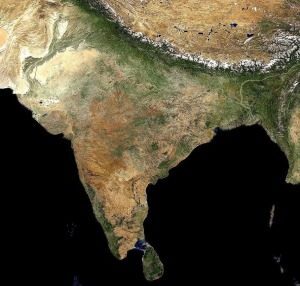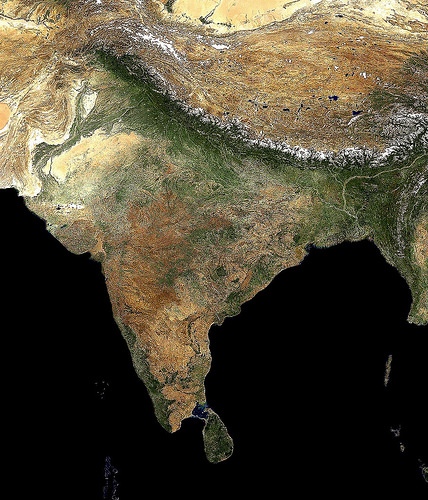
A study* published in the Proceedings of the National Academy of Sciences (PNAS) explores the genetic history of present-day Indians and the peopling of the Indian subcontinent. Researchers have previously suggested that mainland India’s current population largely descended from two ancient groups, namely ancestral north and south Indians. Partha Majumder and colleagues analyzed genome-wide variations from 367 unrelated Indians belonging to 20 ethnic groups, including two tribal groups from the outlying Andaman and Nicobar Islands, as well as data from the Human Genome Diversity Panel, a repository of genomic data representing hundreds of people worldwide. The authors discerned four major ancestral populations in mainland India. In addition to ancestral north and south Indians, the authors discovered Austro-Asiatic and Tibeto-Burman ancestries. Unlike mainland Indians, the hunter-gatherers of the Andaman archipelago likely share ancestry with present-day Pacific Islanders, representing a fifth ancestry in India. Gene exchange was widespread among ancestral groups but replaced by strict endogamy, particularly among upper-caste Indo-European speakers, around 70 generations, or 1,575 years ago; the timing coincides with the reign of the Guptas, whose ruling Hindu elite espoused and enforced the Vedic Brahminism religion. In contrast to a previous analysis that concluded that only two ancestral lineages contributed to Indian ethnic groups, the current study includes a more geographically and culturally representative sample to furnish a granular view of India’s current genomic diversity and of the peopling of the subcontinent, according to the authors.
_______________________________________
The Indian subcontinent. Onef9Day, Wikimedia Commons
________________________________________________
Source: PNAS subject press release
____________________________________________________
*“Genomic reconstruction of the history of extant populations of India reveals five distinct ancestral components and a complex structure,” by Analabha Basu, Neeta Sarkar-Roy, and Partha Pratim Majumder.
____________________________________________________
In addition, the latest Popular Archaeology ebook is now available.
______________________________________________
Travel and learn with Far Horizons.
____________________________________________
This richly illustrated issue includes the following stories: Two remarkable discoveries that are shedding light on human beginnings in Africa; a traveling exhibit and an archaeological site that show how knowledge is more valuable than gold; a Spanish cave and a unique burial that are offering a tantalizing glimpse on the lives of Ice Age hunter-gatherers in Europe; the stunning visual reconstruction of an ancient Roman town; enlightening new finds at a remarkably well-preserved site of ancient Hellenistic-Roman culture overlooking the Sea of Galilee; rare finds that are shedding light on occult practices among ancient Greeks in Sicily; and an overview of the overwhelmingly rich archaeological heritage of Britain. Find it on Amazon.com.









